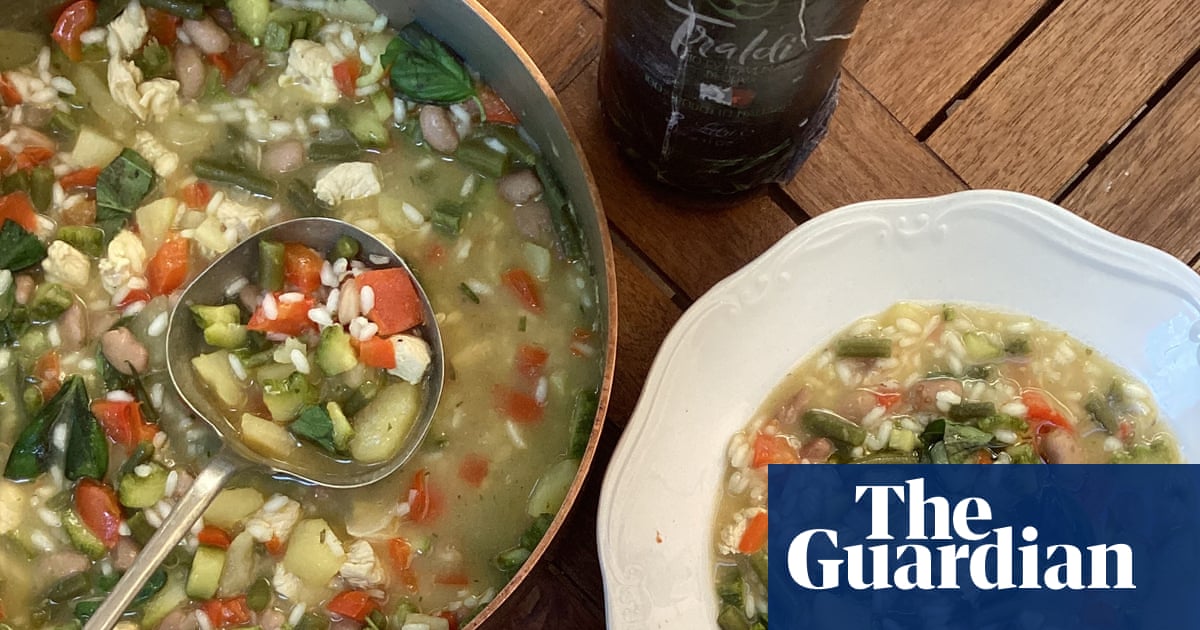
ulling beards from mussels is one of the most satisfying cooking tasks. Especially when you have preoccupations tugging at your attention. In fact, maybe “tugging” is a better word to describe the mussel task; tugging the wispy beard that pokes out of the shell – like a coat stuck in a car door – the bundle of threads created by mussels in order to attach to a solid surface, a rock, a quayside, pier-leg.
As a child, I remember being terrified by the clusters of mussels clinging like wild necklaces to the legs of the pier in Brittany. I would choose to swim 100m back through ink and shadows, alone, rather than climbing up and over the black-blue shells with the others. I also remember eating mussels on that holiday, opening the hinged shells to find an orange ear, being unsettled and delighted by the texture and pool of liquor, by the woman on the next table who got “a bad one” and was sick into her bag, neatly, which I thought was impressive. Even more impressive was how she left, came back to the table, dismissed any concern, and had a glass of champagne.
Memories follow you, as does advice, such as that given to me by a young man collecting mussels from rocks in Puglia: “Unless you are getting them from me, play safe and get your mussels from a fishmonger – but do get them, and eat them with rice.” While they may not have the alluring flavour of wild ones, farmed mussels are still plump parcels of flavour. They are also safe, abundant and not expensive: a fish we should be eating.
Like the mussel collector straddling two rocks, today’s recipe comes from the heel of Italy, Puglia, and is in the spirit of the classic tiella di riso, patate e cozze, but a simpler stovetop version of just rice and mussels. The glory of mussels is twofold: as well as the flesh, they provide briny liquor – an incomparable seasoning.
The original recipe, in Le Ricette Regionali Italiane, suggests stirring a spoonful of grated pecorino into the rice and mussels before serving, which, like the Roman habit of mixing pasta, mussels and pecorino, flies in the face of the idea that cheese and fish don’t make good partners – they do, the cheese acting as a rounded seasoning and also culinary adhesion, bringing the dish together. All that said, it is best to give people a choice. Pass round grated pecorino separately; also red chilli flakes, a few of which tug the dish together.
Rice and mussels
Soak 30 min
Prep 20 min
Cook 35 min
Serves 4
1kg mussels
Olive oil
100ml white wine
1 garlic clove
300g ripe tomatoes, peeled; or tinned tomatoes, without juice
260g risotto rice (arborio or carnaroli)
1 heaped tbsp chopped parsley
Black pepper
Pecorino, grated
Red chilli flakes, to serve
First, soak the mussels in cold water for 30 minutes, then scrub them under running water, scraping away barnacles and pulling away the hairy beards. Discard any with broken shells.
Put the mussels in a large, deep frying pan or saucepan over a medium-high flame with one tablespoon of olive oil and 100ml white wine, cover and cook for a few minutes, shaking the pan every so often. Once the shells start to open, remove the lid and use a slotted spoon to lift them out and into a bowl. Strain the liquor into another bowl and add enough hot, lightly salted water to make it up to 800ml. Pick three-quarters of the mussels from their shells, but leave the rest in for show.
Wipe the pan clean, put it back on the heat with four tablespoons of olive oil and a clove of garlic, and, after a minute, add the tomatoes and a pinch of salt, and cook for 10 minutes, mashing them with a potato masher or the back of a wooden spoon.
Add the rice and stir, then add the mussel liquor and cook, stirring often, for 17 minutes, or until the rice is tender: add more water if it is looking dry - the consistency should be rippling, but not stiff. In the last few minutes of cooking, add the mussels (both on and off shell), parsley, a few grinds of black pepper and stir again. Serve, passing round grated pecorino or red chilli flakes for those who want them.












